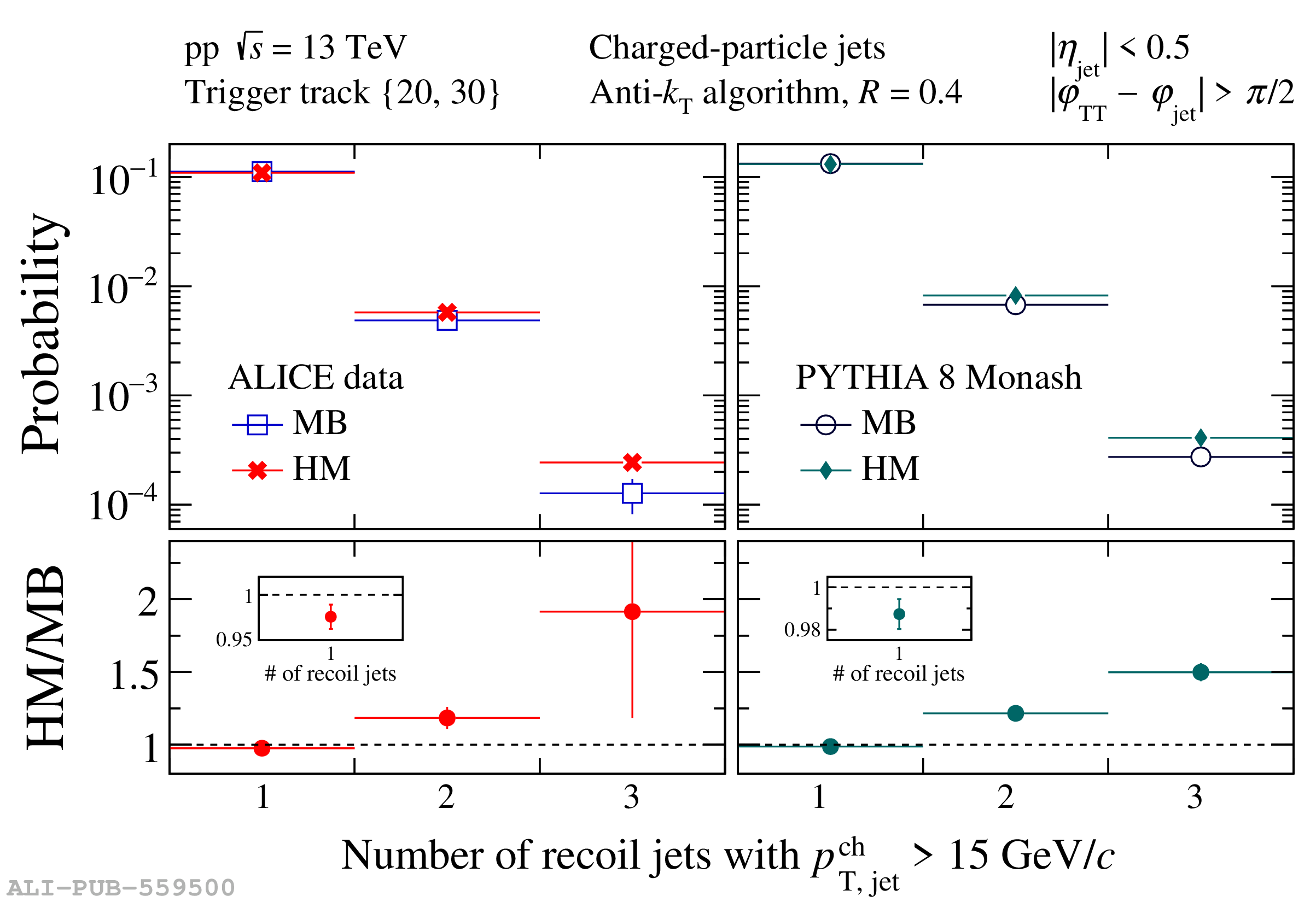The ALICE Collaboration reports a search for jet quenching effects in high-multiplicity (HM) proton$-$proton collisions at $\sqrt{s}$ = 13 TeV, using the semi-inclusive azimuthal-difference distribution $\Delta\varphi$ of charged-particle jets recoiling from a high transverse momentum (high-$p_{\mathrm{T,trig}}$) trigger hadron. Jet quenching may broaden the $\Delta\varphi$ distribution measured in HM events compared to that in minimum bias (MB) events. The measurement employs a $p_{\mathrm{T,trig}}$-differential observable for data-driven suppression of the contribution of multiple partonic interactions, which is the dominant background. While azimuthal broadening is indeed observed in HM compared to MB events, similar broadening for HM events is observed for simulations based on the PYTHIA 8 Monte Carlo generator, which does not incorporate jet quenching. Detailed analysis of these data and simulations show that the azimuthal broadening is due to bias of the HM selection towards events with multiple jets in the final state. The identification of this bias has implications for all jet quenching searches where selection is made on the event activity.
JHEP 05 (2024) 229
HEP Data
e-Print: arXiv:2309.03788 | PDF | inSPIRE
CERN-EP-2023-180
Figure group






